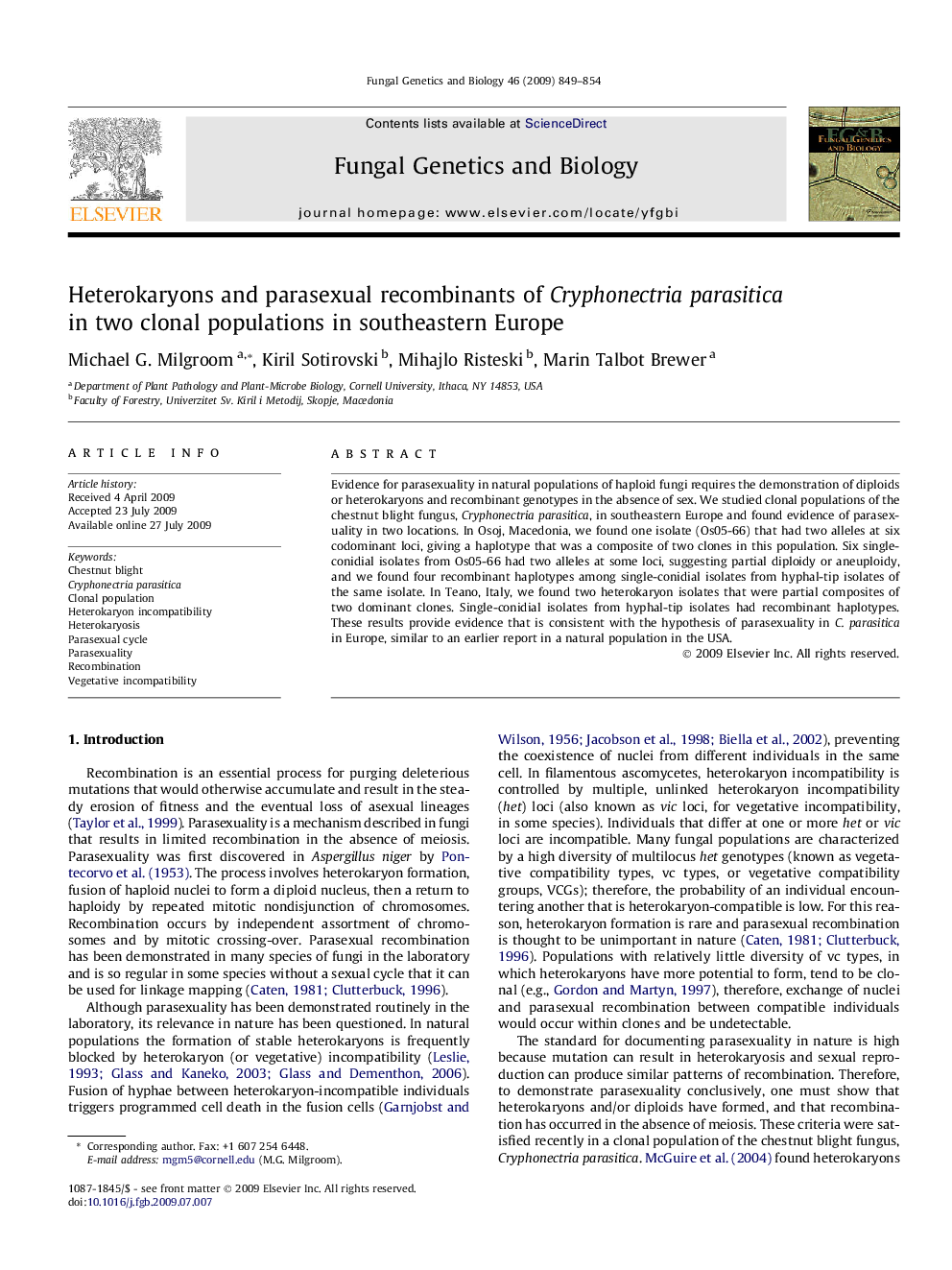| Article ID | Journal | Published Year | Pages | File Type |
|---|---|---|---|---|
| 2181190 | Fungal Genetics and Biology | 2009 | 6 Pages |
Evidence for parasexuality in natural populations of haploid fungi requires the demonstration of diploids or heterokaryons and recombinant genotypes in the absence of sex. We studied clonal populations of the chestnut blight fungus, Cryphonectria parasitica, in southeastern Europe and found evidence of parasexuality in two locations. In Osoj, Macedonia, we found one isolate (Os05-66) that had two alleles at six codominant loci, giving a haplotype that was a composite of two clones in this population. Six single-conidial isolates from Os05-66 had two alleles at some loci, suggesting partial diploidy or aneuploidy, and we found four recombinant haplotypes among single-conidial isolates from hyphal-tip isolates of the same isolate. In Teano, Italy, we found two heterokaryon isolates that were partial composites of two dominant clones. Single-conidial isolates from hyphal-tip isolates had recombinant haplotypes. These results provide evidence that is consistent with the hypothesis of parasexuality in C. parasitica in Europe, similar to an earlier report in a natural population in the USA.
